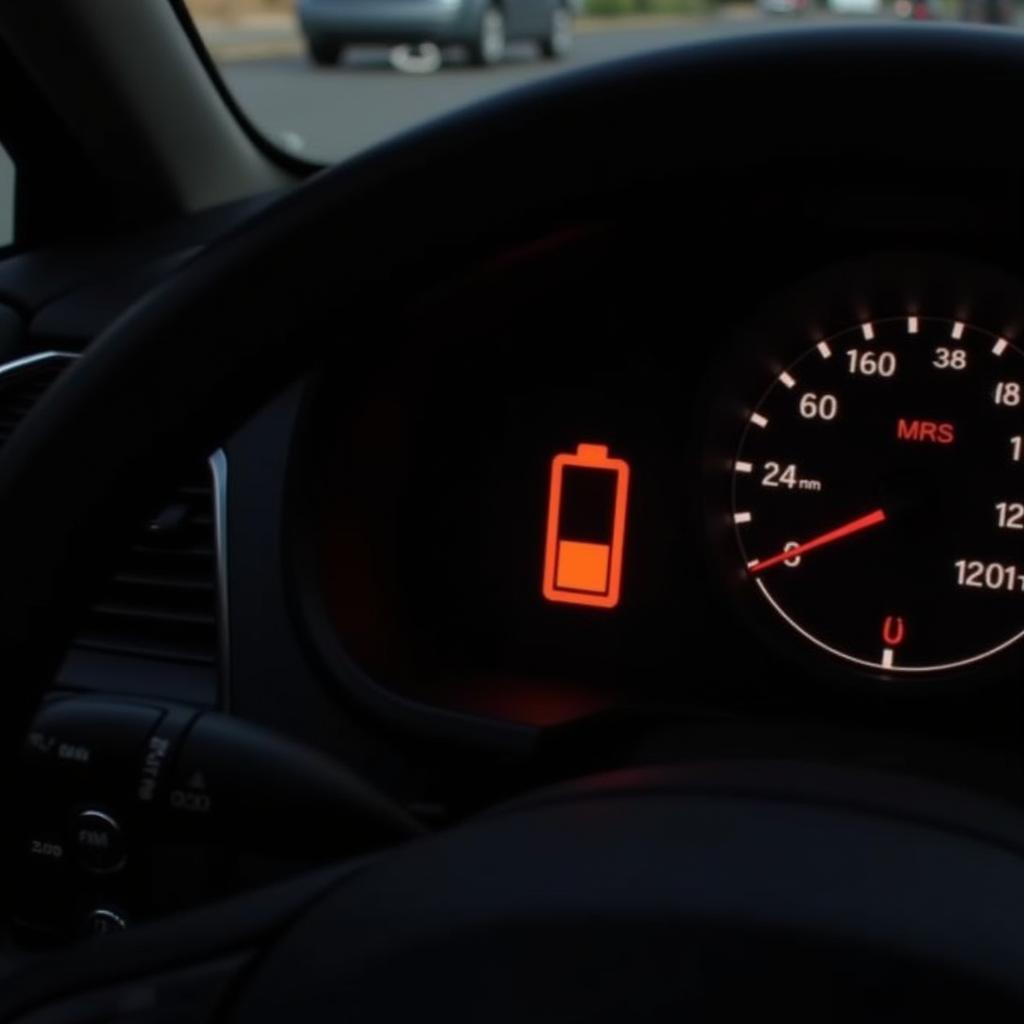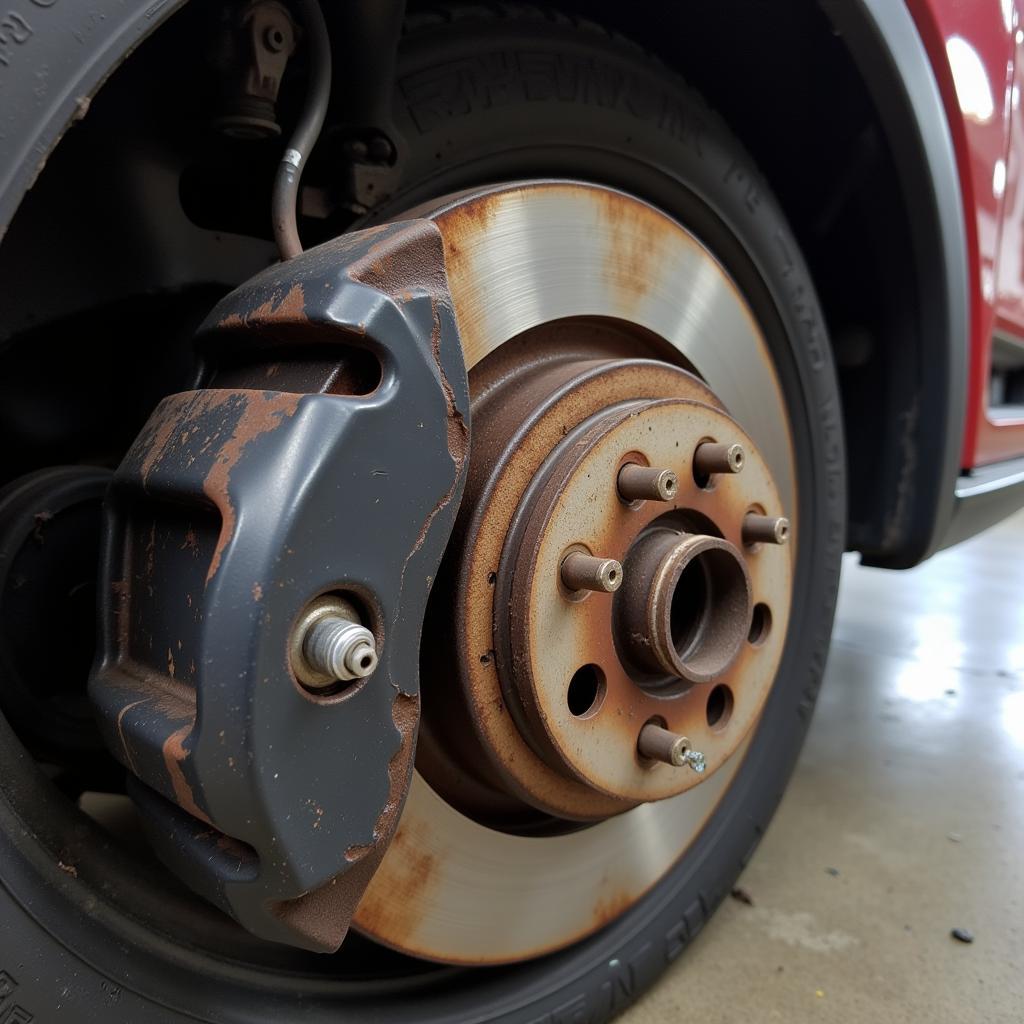An alternator fault preventing your battery from charging is a serious issue that can leave you stranded. Understanding the problem and knowing how to diagnose and fix it can save you time, money, and frustration. This article will guide you through the process of identifying, troubleshooting, and resolving this common car problem.
Understanding the Alternator’s Role
The alternator is the heart of your car’s electrical system. It generates the power needed to run all the electrical components, from the headlights to the radio, and, most importantly, it recharges the battery after starting the engine. If your alternator is faulty and the battery is not being charged, your car will eventually run out of power and die.
Common Signs of an Alternator Fault
Several symptoms can indicate a failing alternator. Recognizing these signs early can prevent further damage and costly repairs. Some common indicators include:
- Dimming headlights: If your headlights dim, especially when idling or at low speeds, it could point to a weak alternator.
- Flickering dashboard lights: Similar to dimming headlights, flickering dashboard lights are another sign of insufficient power generation.
- Warning light on the dashboard: Most cars have a battery or charging system warning light that illuminates when the alternator isn’t charging correctly.
- Dead battery: A dead battery is often the ultimate consequence of a faulty alternator. While a dead battery could have other causes, a recurring dead battery points to a charging system issue.
- Strange noises: Whining or grinding sounds coming from the engine compartment, especially when accelerating, could suggest a problem with the alternator’s bearings or belt.
- Smell of burning rubber: This could indicate a slipping or worn alternator belt.
 Alternator Fault Warning Light Dashboard
Alternator Fault Warning Light Dashboard
Diagnosing an Alternator Fault
If you suspect your alternator is faulty, several tests can confirm the diagnosis.
- Visual Inspection: Check the alternator belt for cracks, fraying, or looseness. A worn or loose belt can prevent the alternator from spinning correctly.
- Battery Voltage Test: Use a multimeter to check the battery voltage with the engine off. A healthy battery should read around 12.5 volts.
- Charging System Test: With the engine running, check the battery voltage again. It should increase to between 13.5 and 14.5 volts. A lower reading suggests the alternator is not charging properly.
- Load Test: With the engine running, turn on the headlights, radio, and air conditioning. The voltage should still remain within the 13.5-14.5 volt range. A significant drop indicates a weak alternator.
“A simple voltage test can quickly tell you if your alternator is the culprit,” says John Miller, a certified automotive technician with over 20 years of experience. “But remember, a bad battery can sometimes mimic alternator problems, so it’s crucial to test both.”
Fixing an Alternator Fault
Depending on the specific problem, fixing an alternator fault might involve:
- Replacing the Alternator Belt: If the belt is worn or loose, replacing it is a relatively simple and inexpensive fix.
- Repairing the Alternator: Sometimes, internal components of the alternator can fail. A qualified technician can often rebuild or repair the alternator.
- Replacing the Alternator: In many cases, replacing the entire alternator is the most cost-effective solution.
“While replacing an alternator might seem daunting, it’s often a straightforward procedure,” explains Sarah Johnson, an electrical systems specialist. “However, if you’re not comfortable working on your car’s electrical system, it’s always best to consult a qualified mechanic.”
Conclusion
An alternator fault that prevents your battery from charging is a serious issue that requires prompt attention. Recognizing the symptoms, performing the correct diagnostic tests, and taking appropriate action can prevent further damage and keep your car running smoothly. If you suspect an alternator problem, don’t hesitate to seek professional assistance.
FAQ
- How long does an alternator typically last? Alternators typically last between 7 and 10 years, depending on usage and driving conditions.
- Can I drive with a bad alternator? You can drive for a short distance with a bad alternator, relying solely on the battery’s charge, but eventually, the car will die.
- How much does it cost to replace an alternator? The cost varies depending on the make and model of your car but generally ranges from $300 to $800, including parts and labor.
- Can a bad battery cause alternator problems? A bad battery won’t directly cause alternator problems, but it can put extra strain on the alternator, potentially shortening its lifespan.
- How can I prevent alternator problems? Regular maintenance, including checking the alternator belt and having your charging system inspected, can help prevent alternator problems.
- What is the difference between an alternator and a starter? The starter cranks the engine to start it, while the alternator generates power once the engine is running.
- Can I jump-start a car with a bad alternator? You can jump-start a car with a bad alternator, but it will likely die again once you turn off the engine.



